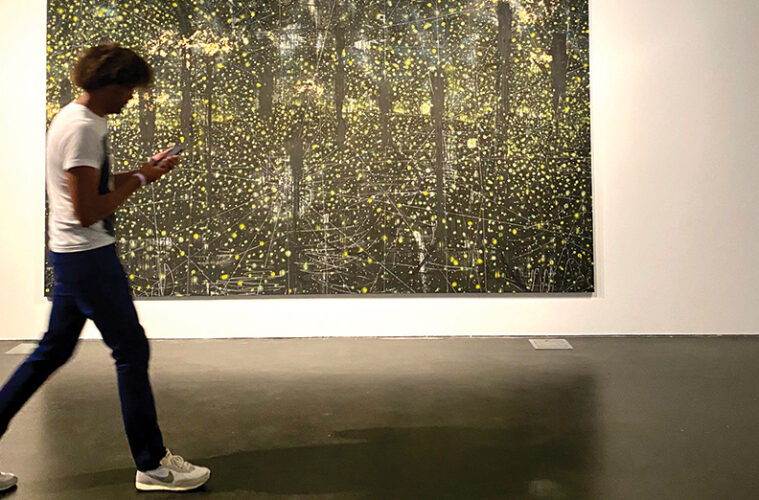CONTEMPORARY ART, MATERIAL CULTURE AND THE SONIC IMPULSE
BY MADISON WILKINSON
The touring exhibition, debuted in 2021 at the Virginia Museum of Fine Art (VMFA), is on view at the Museum of Contemporary Art (MCA) in Denver this winter. “The Dirty South”, was one of the most talked about art offerings of 2021, lauded by the New York Times and the Los Angeles Times, for the way it leans on the hip hop movement to explore 100 years of black art and subversively documents how creative expression prevails no matter the historical circumstances.
The show is a landmark in every way, making a bold stand on behalf of the South, a region of this country long overlooked for its contributions to contemporary art to this day. When it debuted in Virginia, the show altered longstanding expected geographic locations of contemporary art exhibitions of this caliber as well as reached back to pull forward a century of history to tell the story of how visual art, music, identity, politics, and social reckoning comes together to frame Black culture in the American South. The show ultimately argues for the importance of the American South and Black culture as critical to our understanding of America’s past, present, and future.
The widened focus on a century of history is clear as the show finds its winter home in Denver’s MCA and front range museum visitors who are used to encountering contemporary art made in the immediate present by new and emerging artist names, are met by a more historical array, including oil paintings made in the 1940’s directly situated beside video installations created in the past decade.
The show occupies all three floors of galleries at the MCA Denver and moves through the last 100 years to reveal how aesthetic traditions of the African American South have shaped visual art and musical expression. Beginning with the 1920’s, the exhibit starts in the spiritual, jazz and blues music movements interwoven with visual art production and then moves into the pop and hip hop musical movements leading up to today that are all tied together through painting, photography, architecture and digital works. The goal is to show where this music comes from and how it influences the art on the walls.
Curator Valeria Cassel Oliver’s, “Dirty South”, frames this thesis in three ways. She structures the show to first highlight how land influences black art, a complicated notion in a region where enslaved people were forced to cultivate land, and the work presented here illustrates that conflict. The second section explores the influence of the Church on art, where culture is not able to be separated from that spiritual body. And last, the final portion of the exhibit focuses on corporality and the influence of the black body and its treatment reflected in black art.
Oliver’s skillful research into the experience of black, southern artists and traditions introduces museum goers to artists that have rarely been on public view and they likely have never heard of. Artists like Minnie Evans, born in 1892, and who used crayons and pencil to make spiritual nature drawings inspired by Airlie Gardens in Wilmington, NC where she worked as a gatekeeper. Or Charles Henry Alston, an overlooked but crucial figure during the Harlem Renaissance whose work and history is represented with his 1952 oil painting, “Blues Singer.”
Other work included in the show are from Allison Janae Hamilton, Mose Tolliver, Rodney McMillian, Sister Gertrude Morgan, Nadine Robinson, Thornton Dial, Jr., Rashaad Newsome, Sanford Biggers, Mildred Thompson, Radcliffe Bailey, Bisa Butler, RaMell Ross, Alma Thomas, and El Franco Lee II, among many others.
What is so captivating here is how the show makes museum-goers witnesses to the sheer resiliency emanating not only from the artists themselves but from the survival of creative expression regardless of the atrocities happening around the canvas.

